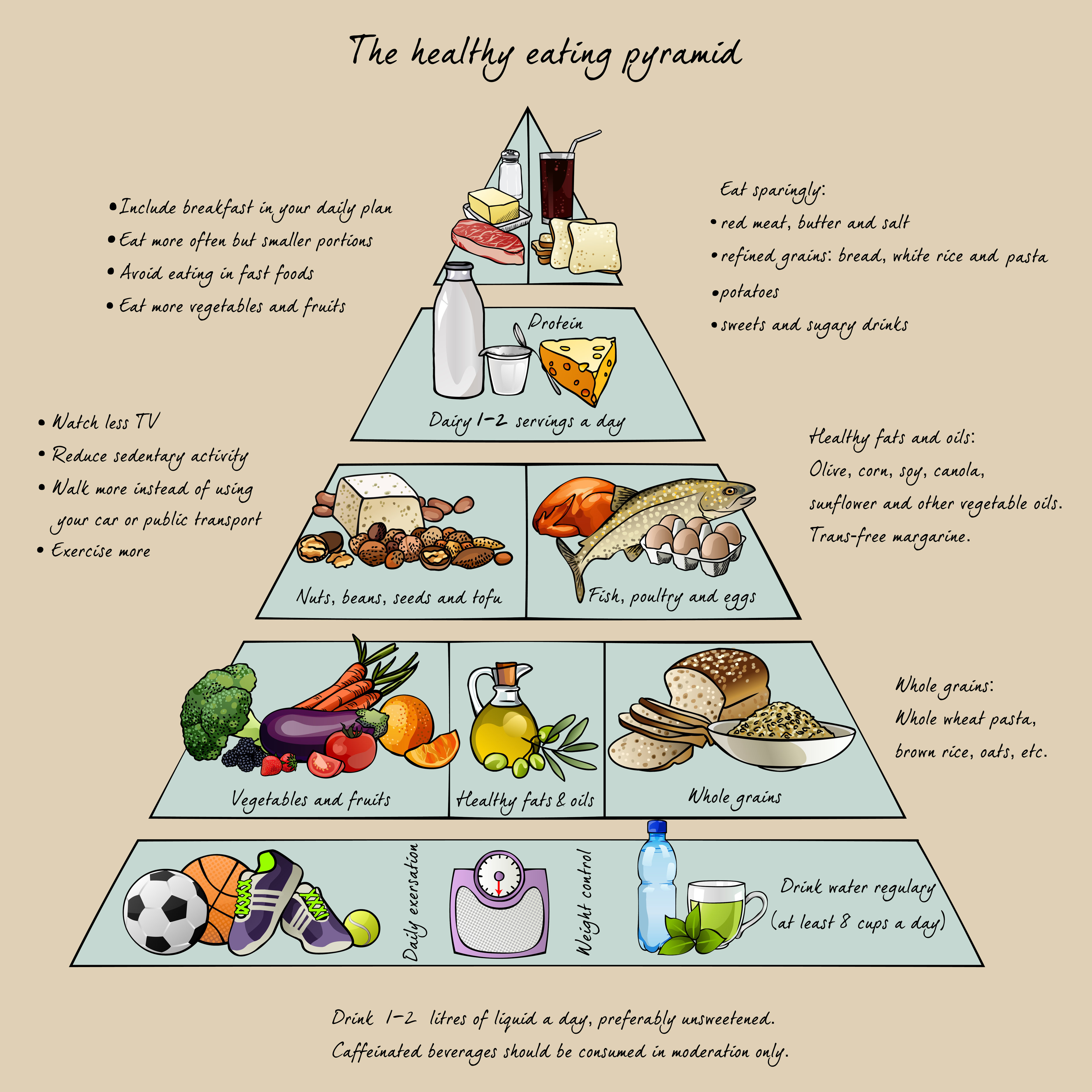1/13/15
Last week, as we helped you prepare for a healthy 2015, we discussed exercise and physical activity. We gave you pointers on how to select and set-up a personalized healthy plan of action. But healthy eating plans along with being physically active are what lead to a healthy lifestyle. Today we will look at adding healthy eating to your exercise plan.

But first let’s review the three main points you need to keep in mind as you engage in any physical activity.
Include physical activity in your everyday life
• That means making it a priority, even if you have to schedule it on your calendar.
• Make it easy to do. Don’t forget that taking the stairs or walking up and down all the isles at the grocery store can be considered physical activity.
• Make it a social experience by finding an exercise buddy to help encourage you.
• Be sure it is interesting and fun. You may find it more fun if you listen to a book or music on your iPod.
• Make it an active decision to include physical activity throughout your daily routine and think of new ways to be active such as parking your car at the far end of the parking lot to make the walk to the store longer (and probably easier to find a parking space).
Try all of the four different types of exercise
We discussed endurance, strength, balance and flexibility training as your options. But there is no reason to stick with just one, think about mixing it up to reduce boredom and risk of injury while you increase your overall fitness.
Plan for breaks in your exercise plan
Life happens and there will be times, such as illness, injury or travel that will interfere with your normal physical activities.
• Don’t be too hard on yourself and don’t worry about the time you have missed.
• If you have stopped because of illness or injury, check with your doctor about when you can safely resume your regular routine.
• Remember why you started exercising.
• Contact your exercise buddy and have them help you get back on track.
• Try something new if you can’t get motivated to get back to the old routine. Be creative in thinking of new ways to exercise.
• If you are starting the same routine, start again at a comfortable level. Depending on how long you have not been exercising regularly, you may need to start at a slightly lower level than where you left off.
Healthy eating emphasizes:
• A diet of vegetables, fruits, whole grains and fat-free or low-fat dairy products.
• It can include lean meats, poultry, fish, beans, eggs and nuts.
• It is low in saturated fats, trans fats, cholesterol, sugars and added salt.
• It is a balance of the calories you get from foods and beverages vs. the physical activities you engage in to keep you at a consistent weight.
To help keep those healthy foods healthy here are some tips to keep in mind:
• Eating vegetables and fruits in a wide range of bright colors give your body a wider range of nutrients. Leaving the skins on, when possible, gives the nutrients and extra boost. Remember to wash all vegetables and fruits before eating.
• Fiber is a very important to your diet. Breakfast is a great time to enjoy whole-grained foods along with fruits.
• Cut the butter and salt by seasoning your foods with lemon juice, balsamic vinegar and herbs.
• While fresh food are much better for you, if you do use packaged foods, read the labels and chose items that are low in salt, saturated fat and trans fat.
• Use lean meat with excess fat removed and poultry with the skin removed. Do not sauté in butter or fry.
• Control your portion size to limit calorie intake. Also eat more slowly to give your system time to recognized when you are full. Here is a link to picture how large portions should be.
• Drink enough fluids to keep your body working properly. This is especially true in older adults because they don’t necessarily feel thirsty even if their body needs hydration. This liquids should not have added sugars and should be low-fat if dairy and low-sodium if broths.
• When eating out look for low-fat options, have dressings, sauces and butter served on the side so you can control how much you use.
• Select tomato-based sauce over cream-based or white sauce.
• Ask for small portions. If they are still large ask for a container to take part of it home BEFORE you start to eat.
• Ask to substitute low calorie options for sides like French fries.
Even with a well-planned diet you may think you need dietary supplements. However, combinations of supplements with any prescription or over-the-counter medicine could be harmful. Also so supplements can have unwanted or harmful effects before, during or after surgery. The best way to find out if you need any supplement is to talk with your doctor.
Hopeful this has helped you get a healthy start on 2015. The next thing to do – make an appointment with your eye doctor professional for your yearly comprehensive eye exam!
 Susan DeRemer, CFRE
Susan DeRemer, CFRE
Vice President of Development
Discovery Eye Foundation

